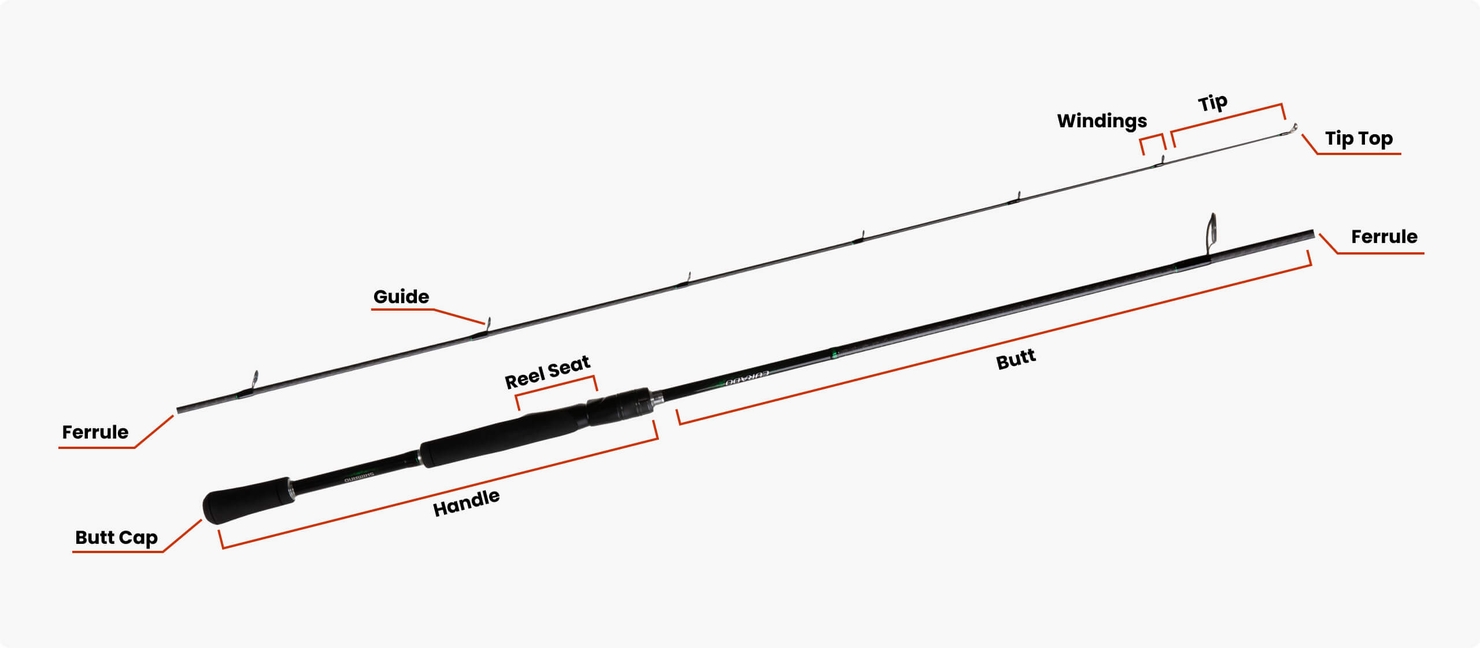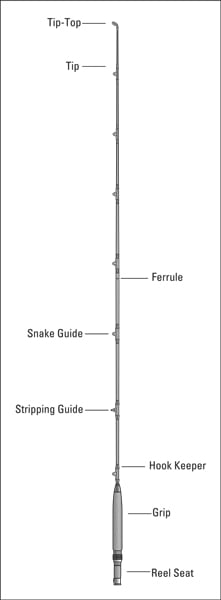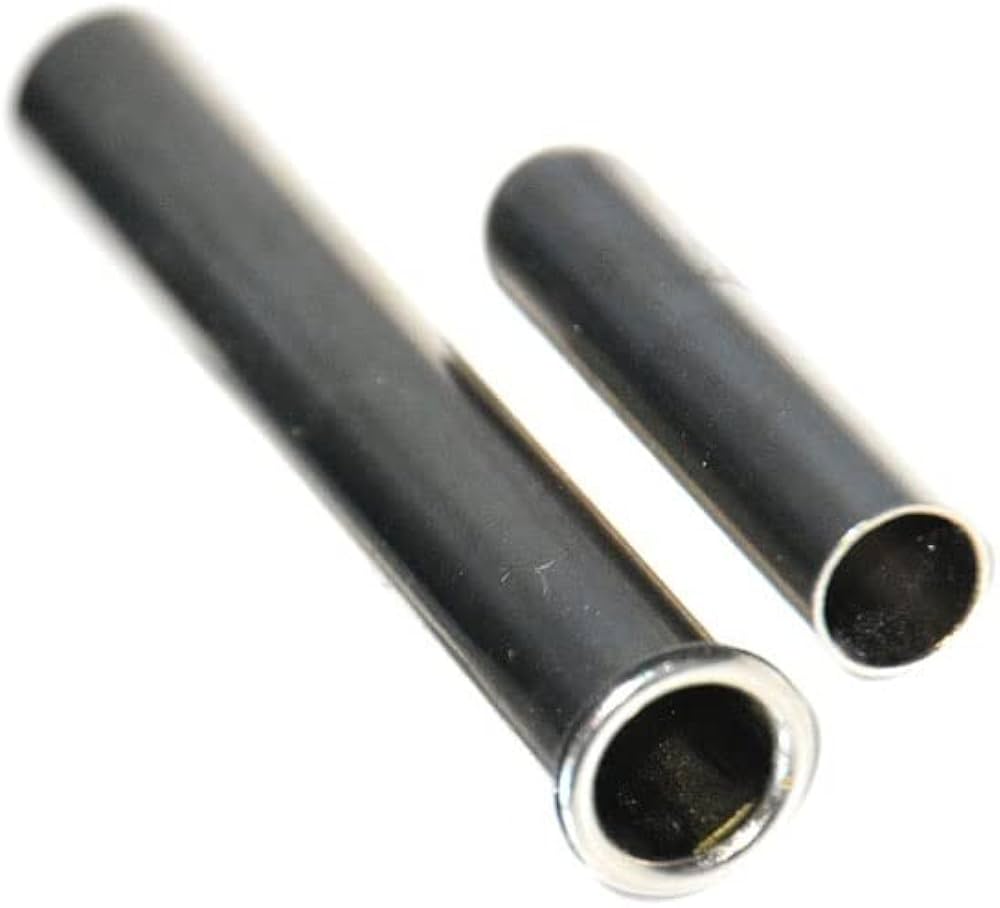To join sections of your powerful fishing rod with rod ferrules, align the guides and gently twist the sections together. Ensure they fit snugly without forcing them.
Assembling a fishing rod correctly is crucial for optimal performance. Ferrules are the connectors that enable the rod to maintain its integrity while being easy to transport. These small yet critical components come in various materials like metal, graphite, or reinforced plastics.
Their design allows for a seamless connection, creating a sturdy yet flexible rod when pieced together. Anglers must handle ferrules with care to avoid damage and ensure a secure fit. Correct ferrule use ensures a successful and enjoyable fishing experience. Connecting your rod pieces properly minimizes wear and preserves the sensitivity and action that quality fishing rods are known for.

Credit: m.youtube.com
The Role Of Powerful Fishing Rod Ferrules
Fishing rod ferrules are crucial in assembling a multipart fishing rod. These small, yet mighty connectors join rod sections seamlessly. They help maintain the rod’s strength and flexibility. Understanding how to use them is key to a successful fishing experience.
Connecting Different Rod Segments
To connect rod sections, start by aligning the ferrules. Gently twist and push them together. Make sure they’re snug but not forced. Regular checks keep the connection secure.
Types Of Rod Ferrules
Fishing rod ferrules come in different designs:
- Brass Ferrules: Durable and corrosion-resistant.
- Nickel Silver Ferrules: Strong with a smooth join.
- Spigot Ferrules: Provide a tighter fit, creating an almost invisible seam.
- Slide Band Ferrules: Allow for easy assembly with adjustable tightness.
Select the right type based on your fishing rod’s material and the type of fishing you plan to do.
Types Of Ferrules And Their Uses
The integrity of a fishing rod rests on how well its sections combine. Key to this connection are the unsung heroes: ferrules. These little wonders not only secure the sections but also ensure smooth functionality. Whether made from sturdy metal or flexible plastic, each type of ferrule boasts unique attributes to match various fishing demands. Let’s delve into the types of ferrules and explore their specific roles.
Metal Ferrules
Metal ferrules are renowned for their strength and durability. Crafted from materials like brass, aluminum, or stainless steel, these ferrules can withstand significant strain. Key features include:
- Corrosion resistance: a must for saltwater fishing
- Secure fit: a snug connection that doesn’t budge
- Compatibility with heavy-duty rods
These ferrules particularly shine when targeting large, powerful fish, as they provide a sturdy, reliable link between rod sections.
Plastic Ferrules
Plastic ferrules serve as a lightweight alternative to their metal counterparts. They are preferable for:
- Fishing rods that require flexibility
- Beginner-friendly setups due to ease of use and maintenance
- Cost-effective solutions without compromising on basic performance
While they may not match the strength of metal, plastic ferrules offer enough resilience for most freshwater applications.
Custom Or Specialty Ferrules
Custom or specialty ferrules represent the pinnacle of personalization in fishing gear. This category includes:
- Ferrules designed for specific fishing conditions or rod types
- Materials like carbon fiber for optimal strength-to-weight ratios
- Enhanced aesthetics for those who value form as well as function
Anglers seeking to fine-tune their equipment gravitate towards these customized solutions for a tailored fishing experience.
Preparation Before Joining Rod Sections
Preparation Before Joining Rod Sections is critical for a seamless and secure assembly of your fishing rod. Proper preparation not only extends the life of your rod but also ensures peak performance on the water. Let’s begin with the essential steps to prepare to join your rod sections effectively.
Cleaning Ferrule Surfaces
Before bringing the sections of your fishing rod together, a clean ferrule is key. Dust, sand, or debris can prevent a snug fit and could damage the rod. Use a soft cloth lightly dampened with rubbing alcohol to clean both the male and female ferrules. Dry them thoroughly with another soft cloth.
Checking Alignment
Proper alignment ensures a straight rod with optimal functionality. Begin by examining the ferrules for any signs of wear or misshapen edges. Gently twist the sections together without forcing them. Check the guides to ensure they line up accurately along the rod. This step maximizes sensitivity and balance, crucial for a good fishing experience.
- Inspect the ferrules for wear.
- Align guides before joining sections.
- Ensure a secure and straight connection.

Credit: www.academy.com
Step-by-step Guide To Using Ferrules
Joining your fishing rod sections is crucial for a sturdy and reliable setup. Ferrules make this possible. They are the connectors between the rod sections. Following the right steps ensures a secure fit for your fishing adventure. This guide will show you how to use these small but vital components proficiently.
Inserting The Male End
First, identify the male end of the ferrule. It’s the thinner, tapered section of your rod. Clean it gently with a cloth to remove any dirt or debris. Align it with the female end of the other rod section. Gently twist and push the male end into the female end. Do not force it, as this could damage the ferrules.
Securing The Female End
Next, hold the female end steady. It’s the wider part of the connection. Ensure it’s clean and free from damage. As you insert the male end, make sure it enters straight without any bending. It should slide in smoothly if aligned correctly.
Ensuring A Snug Fit
Finally, check for a snug fit. The connection shouldn’t be too tight or too loose. A good fit will feel secure but still allow for easy disassembly when needed. If the ferrules stick, a small twist while pulling apart should help. Never pull too hard, as this could damage your rod.
By carefully following these steps, your fishing rod will be ready to tackle any adventure. A well-assembled rod can make all the difference in landing that big catch!
Common Mistakes To Avoid
Assembling your fishing rod is a crucial step before hitting the waters. Yet, many anglers trip up on simple mistakes that can affect their fishing experience or damage their rod. Steer clear of common pitfalls with these tips on joining your fishing rod sections using ferrules.
Overforcing The Connection
Never force the ferrules together. Applying too much pressure can cause damage. Here’s the right way to do it:
- Align the guides: Keep the line guides straight as you join the sections.
- Gentle twist: Apply a careful twist while pushing the sections together.
- Stop if you feel resistance: Don’t push further. Take the pieces apart and try again.
Giving the ferrules a light coat of wax can help them slide together more smoothly.
Ignoring Wear And Tear
Regular inspection of your ferrules can save you from future problems. Look out for the following signs of wear:
| Sign | Action Required |
|---|---|
| Misalignment | Realign or replace the ferrule. |
| Cracks | Discontinue use and replace the ferrule or rod section. |
| Sticky Residue | Clean with a soft cloth and isopropyl alcohol. |
By avoiding these common mistakes, you can ensure a strong and reliable connection between your rod sections, leading to better control and a more enjoyable fishing experience.
Maintaining Your Rod Ferrules
Fishing rod ferrules are key to a seamless fishing experience. They allow you to join the sections of your fishing rod together securely, creating a unified tool that’s both strong and responsive. But, to keep this crucial joint functioning properly, regular maintenance is essential. Below are effective ways to care for your rod ferrules.
Regular Cleaning
Dirt, sand, and grime are the enemies of a smooth joint. Keep your ferrules clean to prevent wear and tear. After every fishing trip, wipe down the ferrules with a soft, damp cloth. For a deeper clean, use a cotton swab to remove any stubborn debris from the inside of the sections. Ensure they are dry before joining together to keep them in top condition.
Lubrication Tips
Proper lubrication helps ferrules slide together and apart effortlessly. Use a small amount of ferrule wax or specific lubricant recommended for fishing rods. Avoid household oils or greases which can attract dirt or damage the material of the rod.
- Apply sparingly to avoid build-up.
- Wipe off any excess before fitting the sections together.
- Reapply after cleaning or every few trips to maintain optimal performance.
Storage Best Practices
When storing your fishing rod, ensure the ferrules are given attention. Disassemble the sections, clean and dry them out before storing to prevent moisture damage. Don’t forget to store your rod in a cool, dry place away from direct sunlight to prevent warping or deterioration.
| Do’s | Don’ts |
|---|---|
| Use a rod sleeve for extra protection. | Store rods in hot or humid places. |
| Hang rods horizontally or keep them flat. | Lean rods against walls or objects. |
Troubleshooting Ferrule Issues
Fishing rod ferrules allow you to join sections of your rod together. They must fit perfectly to ensure a good day’s fishing. Sometimes, you might face issues such as stuck ferrules or damage. Let’s explore how to overcome these challenges.
Dealing With Stuck Ferrules
Stuck ferrules can be a nuisance. It’s a common issue caused by dirt build-up or over-tightening. Follow these steps to free them:
- Clean the joints with a cloth to remove any grime.
- Try twisting the sections gently while pulling apart.
- If still stuck, apply a small amount of ferrule lubricant and repeat the twisting motion.
- In extreme cases, use gentle heat from a hairdryer to expand the material, but be very cautious to avoid damage.
Repairing Damaged Ferrules
Damage to your ferrules can significantly affect rod performance. Here’s how to tackle common problems:
- To address minor scratches, use fine sandpaper to smooth the area.
- For splits or cracks, secure them with ferrule wrap if possible, or consider professional repair.
- Replacing a ferrule might be needed if damage is extensive. Select the correct size and carefully glue it in place.
Regular maintenance and careful handling will extend the life of your fishing rod ferrules. Ensure to check for wear and lubricate the joints periodically.

Credit: www.dummies.com
Advanced Tips For Seamless Joins
Welcome to our segment on Advanced Tips for Seamless Joins. When assembling a fishing rod, achieving a perfect join is critical. These tips help ensure strength and maintain the integrity of your rod.
Custom Fitting Ferrules
A precise fit between segments is crucial for a sturdy rod. Here’s how to achieve this:
- Measure the diameters of both rod sections.
- Choose a ferrule with an inner diameter that matches closely.
- Sand lightly inside the ferrule if too tight.
- For a loose fit, build up the rod section with adhesive tape.
- Apply a thin layer of ferrule cement to both the rod and the ferrule.
- Insert the rod end into the ferrule with a twist motion to spread the glue.
Professional Tuning And Adjustment
Even minor imperfections can affect rod performance. Professional tuning can make all the difference:
- Consult with a rod-building specialist to inspect the ferrule fitting.
- They can align and adjust the ferrules for a smooth finish.
- Balance the rod to distribute weight evenly across the joints.
- Regular checks and maintenance preserve the seamless join.
Remember that consistent care and professional adjustment extend your rod’s life and performance. With these advanced tips, your fishing expeditions will be successful and enjoyable.
Frequently Asked Questions Of How Do You Join Sections Of Your Fishing Rod Together With Fishing Rod Ferrules?
What Are Fishing Rod Ferrules?
Fishing rod ferrules are connectors used to join multiple sections of a fishing rod securely. They enable the rod to be disassembled for ease of transport and storage.
How Do You Attach Ferrules To A Fishing Rod?
To attach ferrules, align the male and female parts at the rod segments’ ends. Gently twist and push them together until they fit snugly and securely without gaps.
Can You Fix A Broken Fishing Rod Ferrule?
Yes, a broken fishing rod ferrule can usually be repaired or replaced. Carefully remove the damaged ferrule, purchase a matching replacement, and adhere it to the rod with strong, waterproof glue.
Do Fishing Rod Ferrules Affect Rod Action?
Fishing rod ferrules can affect rod action. However, modern ferrules are designed to minimize this impact, maintaining the rod’s flexibility and strength where the sections join together.
Conclusion
Assembling your fishing rod with precision ensures a successful and enjoyable angling experience. Using the correct ferrules is crucial for a secure fit between sections. With practice, joining rod parts becomes second nature. Remember, a well-connected rod leads to a better day on the water.
Here’s to tight lines and seamless rods!

